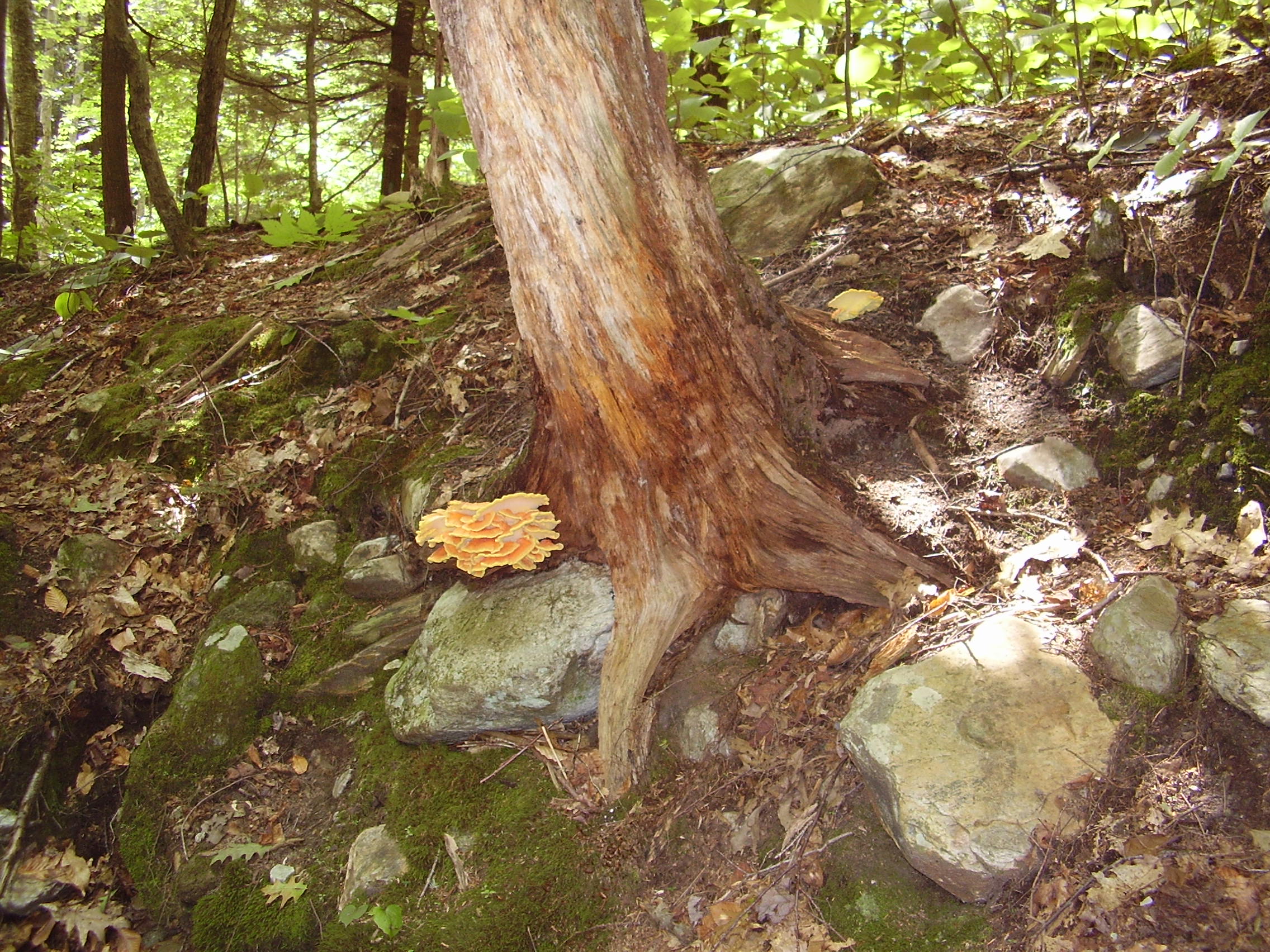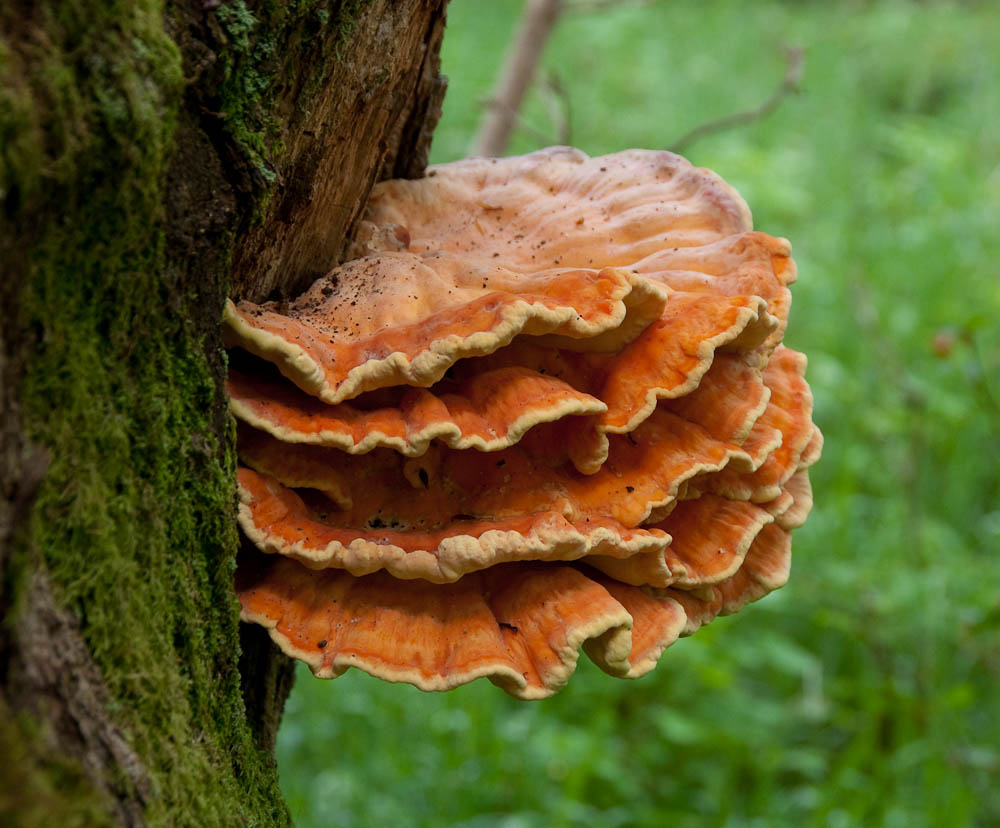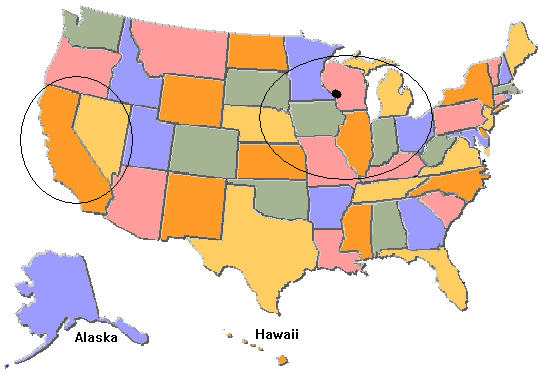Chicken of the Woods
Habitat
Laetiporus sulphureus
is saprobic, meaning that it feeds on
living and dead trees, typically deciduous hardwoods like oaks,
ash, elm, and hickory. It works to breakdown the remains
of a fallen tree, which ultimately adds more nutrients to the
habitat's soil. Laetiporus sulphureus plays a
helpful role in the ecology of its forest habitats.

Fallen trees will
often have up to thirty pounds of this edible treasure,
Laetiporus sulphureus growing within the tree's remains. No
other species of mushroom looks quite like this highly
conspicuous polypore. It's characteristic orange-yellow
fruiting body makes it easy to spot in the
woods, so keep your eyes open for them next time you take a hike
in an area where
Laetiporus
sulphureus is known to grow.
Another organism with bright orange coloring, like
Laetiporus sulphureus is the
mandarin orange.
The fruiting bodies of Laetiporus sulphureus are
commonly found in early spring and fall. They favor rainy
conditions, as the rain helps to spread their haploid
spores, with hopes that those spores will be able to fuse and
generate more organisms. The fruiting bodies will sometimes be found in the
summer, especially if it is a cooler and/or wetter year, but
will never be found in the winter months.
 The cold
temperatures are not favorable for the fruiting bodies to be
growing above the substrate. It's is important to note that while
you cannot always see the fruiting bodies of the organism, the
white, single septate hypae and the rest of the organism are always
present in the soil and decaying tree substrate. Just
because you cannot see it, doesn't mean its not there!
The cold
temperatures are not favorable for the fruiting bodies to be
growing above the substrate. It's is important to note that while
you cannot always see the fruiting bodies of the organism, the
white, single septate hypae and the rest of the organism are always
present in the soil and decaying tree substrate. Just
because you cannot see it, doesn't mean its not there!
Laetiporus sulphureus is acutally edible! The taste of properly prepared Chicken of the Woods is often described as grainy or meaty, hence the Chicken of the Woods nickname. However, it should be duely noted that Laetiporus sulphureus that are found growing on Conifer Trees like pine, hemlock, blue spruce, fir, or tamarack should not be eaten! As with eating anything from the wild, you should be careful about what you decide to take home with you. Make sure that you know you have a true Laetiporus sulphureus specimen before you decide to cook it up for dinner.
Laetiporus sulphureus is typically found in the midwest states in the U.S., and is also largely distributed east of the Rocky Moutain Range, as well as in Europe. The large black dot seen in the photo to the right is La Crosse, Wisconsin, which is were I am basing all my research from, and a common habitat for Chicken of the Woods. Other species of the same genus can be found in California, such as Laetiporus gilbertsonii, and Laetiporus cinncinatus.To learn about
ADAPTATIONS for Laetiporus sulphureus,
CLICK HERE!
To learn more about another organism that is commonly found in the
La Crosse area, the American Bullfrog,
click here.
